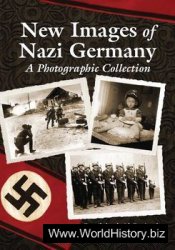The Amalgamated Clothing Workers of America (ACW) was founded on December 25, 1914, as an outgrowth of another labor union, the United Garment Workers (UGW). The latter was unable to adequately represent the influx of immigrant labor in a series of devastating strikes, 1910-14, so a faction arose under Sidney Hillman, a Lithuanian Jew, which declared its independence from the older organization. The ACW was not recognized by the American Federation of Labor (AFL), but Hillman and his cohorts remained fixed in their determination to organize the entire men’s clothing industry. His dogged pursuit of this goal seemed far-fetched initially, but the aggressive Hillman proved himself an exceptionally talented labor organizer. In 1916 he secured a 44-hour workweek for the rank and file and agitated strongly against the exploitive sweatshop conditions usually encountered by immigrant workers. He also managed a rapprochement with the AFL and eventually joined their ranks in 1933. H owever, the clothing industry was devastated by the onset of the Great Depression in 1929 and the ACW was hard-pressed to keep its members fed, clothed, and housed over the next four years. Hillman managed to assist by mitigating wage and benefit cuts for those workers still employed, while agitating for the election of Franklin D. Roosevelt. Roosevelt’s victory in the election of 1932 placed a pro-labor administration in Washington, D. C., and the ACW proved to be at the cutting edge of labor reforms such as unemployment insurance, cooperative housing, employer-provided health and life insurance programs, and union daycare centers. Hillman’s militant activism grated upon the more conservative and trade-oriented AFL leaders, however, so in 1935 he joined United Mine Workers of America (UMW) leader John L. Lewis in founding the industrial-based Congress of Industrial Organizations (CIO). The AFL eventually expelled the ACW in 1938 for its strident militancy. Hillman’s success as an organizer swelled the ranks of the ACW, which reached 260,000 members by 1939. Demographically, the union remained dominated by Jewish, Italian, and other ethnic groups from southern and eastern Europe. By the time Hillman died in 1946, he had made the ACW into one of the nation’s most effective labor unions, with an extensively broad social welfare program that many other unions sought to emulate.
Further reading: JoAnn F. Argersinger, Making the Amalgamated: Gender, Ethnicity, and Class in the Baltimore Clothing Industry, 1899-1939 (Baltimore: Johns Hopkins University Press, 1999); Steven Fraser, Labor Will Rule: Sidney Hillman and the Rise of American Labor (New York: Free Press, 1991).
—John C. Fredriksen




 World History
World History









